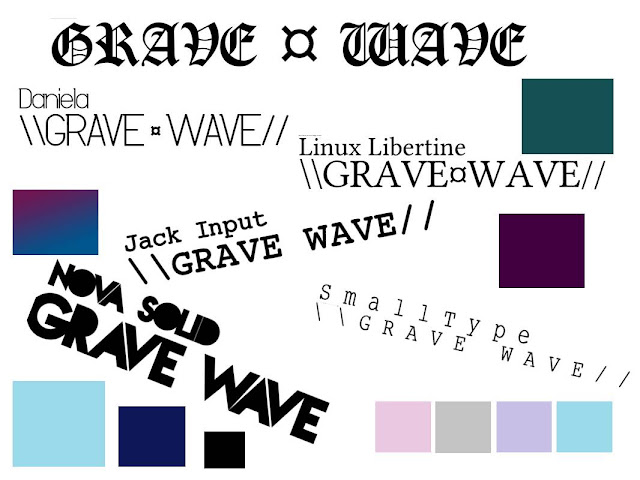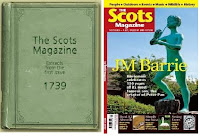Since
September I have looked at magazines, first, I created an idea for a school
magazine and developed the cover as a preliminary task, then went on to research
institutions, media theories and finally, magazines fitting to my music genre of
choice. Over this time, I have been working on developing my own magazine
cover, contents page and double spread article for a music magazine.
1. Forms and
ConventionsMy
magazine both challenges and develops certain forms and conventions of the
industry throughout the composition of my texts. Although my magazine focuses
on a somewhat new genre thus having little information or texts about it, my
work was inspired by a variety of photos, magazines and their conventions,
which helped me produce this magazine.
For example, my cover maintains a regular layout: using headers, a masthead at the top with main image protruding it, flashes, prices, included articles and a tag line. This makes it appear professional and knowledgeable of usual magazine covers. Similarly, in my contests page and double spread article I employ techniques used within magazines, my contents has taken direct inspiration from mainly fashion magazines rather than music. I feel like this would give the impression that my magazine is fresh, clear and stylish, this would be important to my readership it is a genre which aesthetics are very significant.
 My
magazine also challenges some usual conventions with in it, such as on my front
cover, the singular main image is not centred unlike most magazine covers this
may look unusual and attract interested new readers. By doing this with the
image, it is also defying a common rule within composition of keeping a space
on the left third of the page. By making this rule the reverse of usual it
would seemingly break norms of some other magazines and once again be eye-catching
to a passer-by .
My
magazine also challenges some usual conventions with in it, such as on my front
cover, the singular main image is not centred unlike most magazine covers this
may look unusual and attract interested new readers. By doing this with the
image, it is also defying a common rule within composition of keeping a space
on the left third of the page. By making this rule the reverse of usual it
would seemingly break norms of some other magazines and once again be eye-catching
to a passer-by .2.Representations of Social Groups
When I created my model's characters as musicians, I was hoping to reflect a darkwave vibe without being strictly 'gothic' or 'alternative' like other magazines. I used a lot of purples, blacks and blues with a foggy type of effect to mirror the aestethics of the genre (in album and fan art, etc.) I feel I may not have represented my band in the way most media does, in the article. Many magazines imply that bands live too much of a "rockstar" lifestyle with drugs and alcohol, and although I mention the duo both being seemingly hungover, I describe them as friendly, if not a little unusual, also. I think this may represent the social groups of creative, student types within my target age groups.
3. Distribution After researching the main magazine publishers , I found that 90% of magazines published in the UK are published by:
- IPC media
- EMAP
- Dennis
- Conde Nast
- National Magazine Company.
I think the magazine publisher that would
be best for my magazine may not be a well-known publisher as it might be
considered a specialist magazine. I imagine if a magazine like mine would stand
as an individually published magazine or fanzine it would call in the correct
target market. However if one were to publish my magazine I think a publisher
like Bauer could as although it issues popular and varied magazines, it does
although print a lot of magazines for specific markets varying from mother and
baby magazines to exclusive motoring magazines. However under the category of
‘men’s entertainment’ they only have KERRANG!, Mojo and Q, which- other than
KERRANG! are focused mainly on popular music in general. Bauer might want to
invest in publishing my magazine as it would bring a completely new market for
them and help expand their music category of magazines.
Alternatively, a slightly less publisher may want to publish my magazine such as the company Condé Nast, the US based publishers focus on mainly ‘up market’ magazines, with their main focus on luxury fashion, printing Vogue, Glamour and GQ but have also broke up of into home, bridal, food, travel and technology. They may want to expand into music magazines also.
4. AudienceBy looking into fans of witch house music on last.fm and similar websites, I came to a conclusion that my target audience was fans seemed to be possibly a 60:40 mix of males to females; their ages seem to average around 19-28. They tend to be mainly from England, America or Slavic countries and into a variey of other dark and experimental genres of music. I tried to reflect this in the language I used.
5. Media Technologies
Throughout the process of creating my magazine, I have
learnt that the production of a magazine uses a larger variety of technologies
than I had first imagined. I have used Photoshop at most stages of production,
whether that be to slightly edit photos or make my contents page. I also used
Serif Photoplus, similar to Photoshop, I preferred this to create my cover as
selecting layers was easier and it was less complicated to get access at home.
As well as this, I used Serif Pageplus and Adobe InDesign, software which I had never used before,
to create my double page spread, I became more confident in making my
article and experimenting different compositions. In the early stages,
when researching typesets DaFont.com was a very important tool to me,
although I ended up using a reasonably basic font, it gave me a greater
understanding at which fonts work with different genres. Of course I used
the Internet: ( both Internet Explorer and Google Chrome) to explore and
research various sources throughout the course, I have learnt the
importance of how reliable a text if before using it within my work, also
I have used this website, Blogger as a tool to track or log my progress
throughout the year as a diary as such to understand each process I have
gone through.
As well as these, I have used my digital camera, Canon PowerShot A560, to take the
photos for my magazine. I have learn passed my former basic knowledge of
this. It produced high quality pictures for my photo sets, although the
resolution is not the best, I think this helped my magazine as the slightly
grainy and pixelised look is used a lot throughout the genre of witch
house .
6. Personal Progression
Since my preliminary task my skills of using have increased greatly, although I had a basic knowledge of programs such as Photoshop and was aware of layouts/composition of magazines in my preliminary task, it’s obvious I was not yet fully accustomed to the programs used or some of the media conventions. My skills in editing and photos and typesets has increased significantly, as have my understandings of the industry.
I feel my magazine looks more professional and that I have became more confident in editing photos and experiment with colours and special effects. I have become more able at noticing reoccurring colours and trying to incorporate them into the cover as a theme for example I have uses the hint of lilac and purple within my background and drawn it to the masthead and main article to look more flowing; whereas my school magazine only very loosely holds the theme of orange and white.
I feel my magazine looks more professional and that I have became more confident in editing photos and experiment with colours and special effects. I have become more able at noticing reoccurring colours and trying to incorporate them into the cover as a theme for example I have uses the hint of lilac and purple within my background and drawn it to the masthead and main article to look more flowing; whereas my school magazine only very loosely holds the theme of orange and white.
I feel that although I had a knowledge of magazine layouts, how I used these tools did not accurately reflect how the media uses these and looks quite amateur. Whereas I think in my final piece the use of programs and conventions portrays my improvement over the months. My progression is apparent from the preliminary task to my final text and that it is evident just throughout my covers.




















































